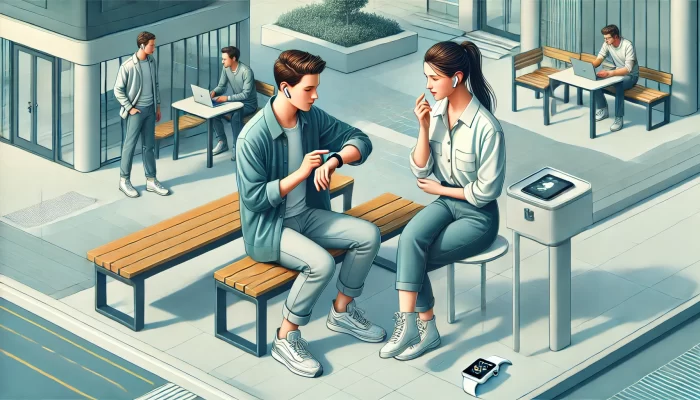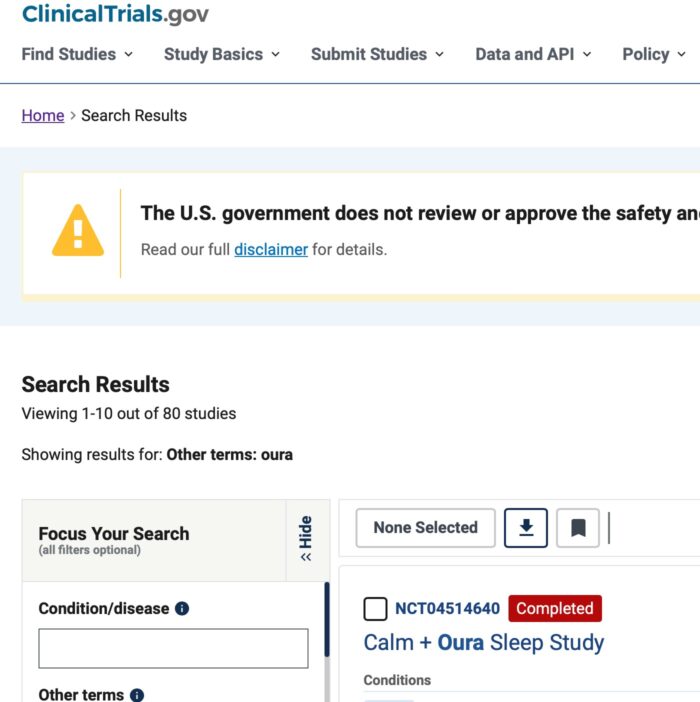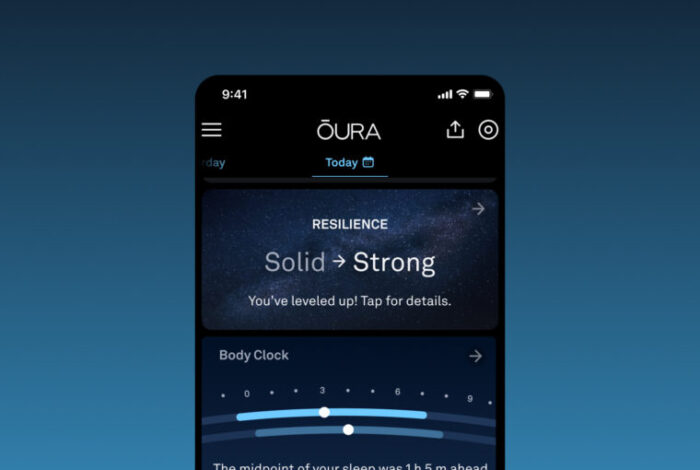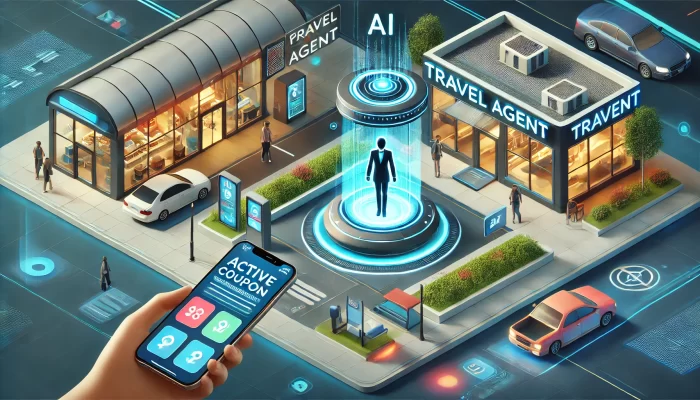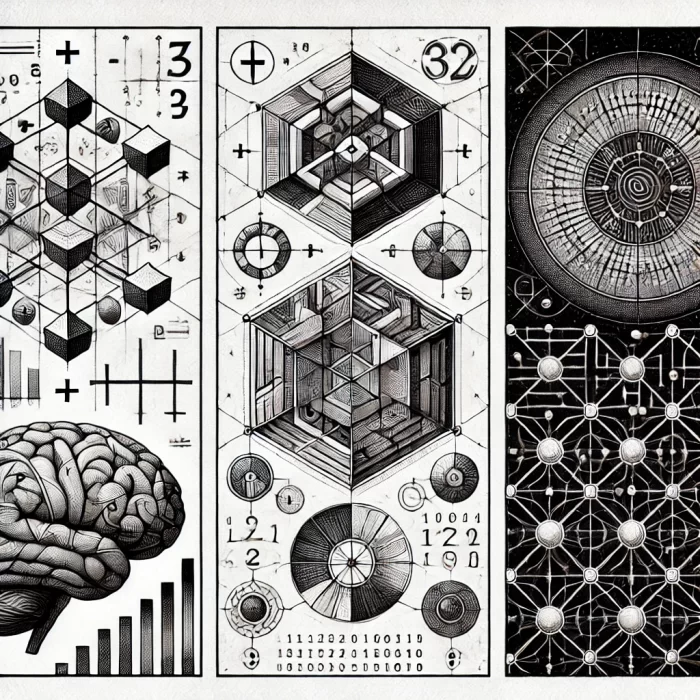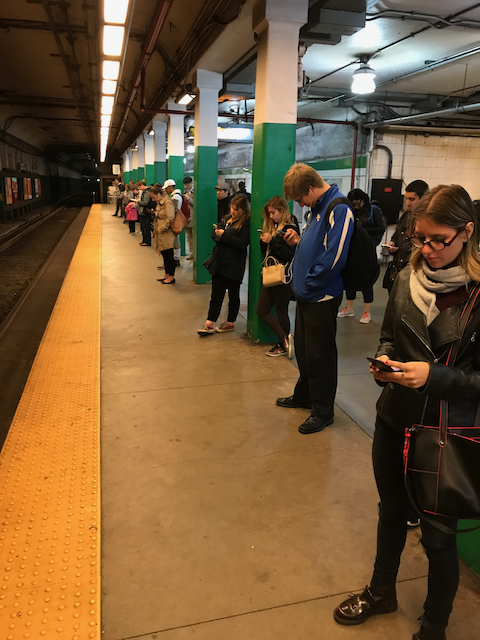Recently, Oura, the smart ring and wellness company, announced a significant partnership with Dexcom, a maker of glucose sensing medical devices. The closer partnership will allow Oura users who have a Dexcom (especially, I suspect, Dexcom’s OTC glucose tracker, Stelo) to get a unified view of their Oura data and Dexcom data. This would provide a closer view of correlations between glucose level and wellness, as viewed by the Oura.
More significantly, I see this as a step closer to something I’ve been noodling about for the past few weeks: the broader therapeutic potential of the Oura Ring.
About the ring
If you’re not familiar with the Oura Ring, it’s a smart ring that functions as a health and activity tracker, geared towards providing overall health guidance. The ring has a set of sensors to measure temperature, heart rate and blood oxygen, and an accelerometer to measure movement and activity.
What makes the Oura Ring stand out from other activity trackers is that Oura have been able to develop models that use the sensors’ data to provide a range of biometrics, including sleep quality, recovery and readiness, activity tracking, and aspects of women’s reproductive health.
One common anecdote during the pandemic was the ring’s ability to alert someone they were coming down with COVID before they showed outward symptoms.
These models are developed in Oura’s own labs with their own scientists. And they seem to be constantly working to develop more. Recent acquisitions by Oura around metabolic marker companies suggest that wedding the ring’s sensors with metabolic data could help create even more interesting biometric models (and, yes, better wellness guidance).
Ideas mixing
I have been pondering the intersection software and sensors and users for a very long time. So some of this thinking has had elements gestating for a long time. What triggered this latest brain wave (and this post) was the overlap of two unrelated incidents.
The first incident was me finally capitulating and purchasing an Oura ring. My curiosity was too much to ignore. My last digital health device purchase was an Apple Watch in 2017. I was due for a new gizmo. Once I got the ring, my brain instantly went into analytical mode, dissecting the purchase process and the on-boarding, checking out all the corners of the app (and then the redesigned app a few weeks later), studying what the ring tells me about myself. [there are a ton of good reviews of the ring – this is not that sort of review]
The second incident was a digital therapeutics webinar. For those who don’t know digital therapeutics (DTx, for short), these are software-as-therapy, basically, rather than a pill, you use an app (for want of a better word) that has been clinically validated thru a rigorous process to show therapeutic effect. Imagine some app to help with smoking cessation, but proven, like any other FDA-approved drug, to work (rather than the usual digital health apps that are skimpy on proof of effectiveness).
During the DTx webinar, my digital health mode kicked in (been a while, and having an Oura ring sensitized me, haha). I have been following DTx for a number of years, but always felt that most DTx companies had not found the right commercialization combination. During the DTx webinar Q&A I asked if maybe a better path to market for DTx was as companion software – not just a support function, but as PART of therapy (interestingly, later I found a post I’d done in 2018 specifically on this, when I was advising folks on this topic, calling it “pill-plus”).
That’s when the wheels mixing DTx and Oura ring started turning.
Value of large-scale baseline data and models
As I began mixing the ideas of DTx and the Oura ring, one key advantage I immediately realized was Oura’s large-scale baseline data and models.
You see, one challenge with digital biomarkers is building the models. Often these require large amounts of data that might not be possible to collect. But Oura has amassed enough healthy baseline data for certain healthy states and activities. Maybe the baseline data alone could help with various therapies. For example, Oura has large-scale typical sleep data and seems to have understood patterns of typical daily activity and temperature variations. And, by now, they should have a handle on typical recovery patterns and heart rate variation across demographics.
And all this baseline data and models could be used to transfer learnings into other areas, into which they could expand.
So, with what Oura already have, the ring could be valuable in deviation detection, the recognition of healthy and unhealthy patterns. They might not always have to know the disease-state data to create useful clinical insights, but just knowing what is typical is enough.
Basically, with the foundation of baseline data, where can detection of deviation from typical improve interventional therapies?
From wellness device to therapeutic tool
Could the ring be used in tremor diseases such as Parkinson’s, such that it could guide the use of a drug (titrate?), or track the effectiveness during a clinical trial?
Or, say, could it understand effectiveness of chemo drugs thru indicators of fatigue, nausea, or sleep effects?
Could the Oura ring be used as a true therapeutic companion, as part of an actual therapy?
While I think there are many areas where the ring can be used to monitor patients under drugs (sort of the Dexcom case), I’m more interested in the use of the rings as true companion, part of the actual therapy.
Some potential therapeutic applications:
- Medication timing optimization – such as when a drug is wearing off or needs a boost, or timing of dosages
- Closed-loop therapeutic systems – such as timing chemo drugs aligned with periods of better resilience
- Behavioral therapy integration – such as helping monitor chronic fatigue patients to adjust drugs
- Active biofeedback – such as alerting patients of impending physiological changes that need to be addressed to avoid an issue
And the more intriguing therapeutic potential would be in conditions where:
- Timing of intervention is crucial
- Digital biomarkers (physiological markers the ring could model) correlate strongly with symptoms
- Responsive adjustment of treatment improves quality of life
- Continuous monitoring is better than periodic clinical visits
Regulatory considerations
Of course, if the ring were to be used in some therapeutic intervention, there would need to be much more regulatory validation at so many levels. Moving from a wellness device to a therapeutic medical device would push Oura into a completely different regulatory framework.
What device class would such companion uses fall under? What kind of clinical evidence would be needed? How might this affect manufacturing and documentation at Oura? How would the whole system be validated – from algorithms to data to use?
For sure, the regulatory burden would be significant. But not unheard of. There are other consumer device manufacturers, notably Apple, who have validated aspects of their devices for certain diagnostics. Though I feel that most are hybrid in that the devices are not fully regulated medical devices, but are being incorporated into therapeutic protocols – the device isn’t the therapeutic, but the software and data is used in a therapeutic setting.
What therapeutic areas?
Thinking of specific therapeutic use cases, are there current therapeutics that have room for optimization; where digital biomarkers could provide a meaningful guide for treatment; where continuous monitoring could provide better insights than periodic assessments?
My first thoughts went to diseases with a motion component, such as multiple sclerosis, rheumatoid arthritis, Parkinson’s. The ring could watch for gait changes, fatigue patterns, or sleep quality.
But then what about diseases or therapies that affect behavior, where dosage is related to the quality of life, such as depression, chemotherapy, or even GLP-1? Changes in sleep patterns, heart rate variability, temperature changes, and activity levels could be a good measures of how well the therapy is working.
And the intervention doesn’t have to be a drug. I had some conversations with surgeons who want to use the ring pre- and post-surgery. How might the ring enhance preparation and recovery, but also perhaps improve the effectiveness of some surgical device, like in hip or knee replacement?
Sidebar: Digital biomarker-guided therapy with the Oura ring – Parkinson’s Disease example
Bouncing ideas off others
In the past weeks I attended a few events and was able to talk to folks who think about clinical trials and about digital biomarkers. Digital biomarkers have been important in digital health applications and in DTx applications. But also, there is a growing desire to apply digital biomarkers to more clinical trials, even having digital endpoints, rather than typical clinical biomarker endpoints seen in genetic tests, blood tests, or the like.
The folks I spoke to were intrigued. Tho just working on digital biomarkers is a challenge in pharma. And I feel that drug manufacturers are still getting used to digital tools to help their patients – they are not ready for digital tools are part of their therapies (despite all the pharma digital health teams that have sprouted up in the past 5 years).
And, remember my comment above on “pill-plus”, using DTx as part of therapies. Well, the FDA has some draft guidance on software “companion products” to therapies, opening up a proper paths to market for “pill-plus”.
Safety first?
An insightful comment from one of the digital biomarker experts I spoke with has me rethinking things. They felt that rather than focusing on all the potential therapeutic applications, we should “focus on safety.” That is, how might the ring make existing therapies safer?
The basis for making therapies safer could already be based on the foundation of baseline data and knowledge of what it typical. Therefore, the ring could provide a better method for improving the therapy’s safety profile. Or, due to monitoring capabilities, the ring might allow for more verifiable therapeutic and safety claims. For patients and providers, the ring’s safety monitoring could reduce anxiety about side effects and provide early warning of issues and prevent serious complications.
For example, in chemotherapy, rather than helping optimize the therapy itself, the ring could first prove its value by providing early warning of dangerous side effects through detection of deviations from typical patterns.
Perhaps a safety-first approach might actually accelerate adoption, as safety is an easier and simpler feature to understand and perhaps measure, rather than therapeutic or companion therapeutic effects.
Questions for Oura
I’ve not had any discussion with Oura regarding this. And if I did, such discussions would fall into some confidentiality bucket, anyway. Indeed, I wanted to get this post out before I did, so I can cleanly make these comments without including any official or unofficial comment I might have heard from Oura. (hm, is that some sort of disclaimer?)
I do think Oura is thinking of therapeutic applications, tho. They recently announced a clinical trial around cardiovascular health. And they seem to be looking to hire someone with clinical trial data experience (as of 25nov24), and a head of partnerships. Will that head of partnerships be looking to also help folks with clinical trials using Oura or even maybe drug makers?
Indeed, I found 80 clinical trials mentioning Oura as of 25nov24. Maybe the deeper move into therapeutics I am thinking of here is already happening, either with or without Oura? Read my sidebar below for more.
Sidebar: Analyzing the clinical trials mentioning Oura (with Claude.ai)
In closing
I’ve had a lot of fun thinking this idea thru and talking to folks about it. The idea of applying the Oura Ring as part of a therapy is not far-fetched. Not only are there examples of the progression from wellness device to therapeutic tool by other manufacturers, there are some signs that Oura is thinking of this too (and based on the number of trials, all this might already be real).
What makes Oura special is the value of their large-scale baseline data. They might not need disease-specific biomarkers. Even if they did, their experience in capturing and modeling digital biomarkers would allow them to transfer those learnings to new approaches.
One of the first therapeutic areas I thought of was Parkinson’s Disease, as I have seen a few interesting therapeutic devices in this space. And when I see an accelerometer, I think motion, so jumped to Parkinson’s. But as I followed this thinking down the rabbit hole, I realized that there are opportunities for connected care, as well.
I’m now wondering what the potential next steps would be. I should review more thoroughly the different clinical trials already using the Oura. And I do know I need to learn more about Oura’s APIs and see what data and models are exposed. I am also wondering about what therapeutic use of the Oura ring might look like to patients, researchers, and care givers.
What do you think? What do you think of combining connected digital wellness devices with therapies? And if this is something useful, how do we get there?
Image from Oura
